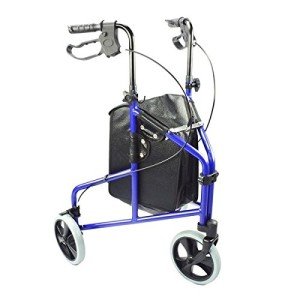
Lightweight Walker
FollowOverview
-
Founded Date September 14, 2002
-
Sectors Engineering
Company Description
Walker With Wheels Tools To Help You Manage Your Daily Life Walker With Wheels Trick Every Individual Should Learn

Walker With Wheels: Revolutionizing Mobility for Enhanced Independence
Introduction
For individuals experiencing mobility difficulties, walkers have actually long been a relied on aid, offering stability and support. The intro of walkers with wheels has changed the landscape of assisted mobility, offering users higher self-reliance and liberty. This short article checks out the benefits, types, functions, and factors to consider surrounding walkers with wheels, gearing up readers with vital knowledge to make educated choices.
The Advantages of Walkers with Wheels
Increased Mobility
Walkers with wheels enable smoother motion. The wheels supply boosted maneuverability, allowing users to browse different terrains, both inside and outdoors, with ease. This feature decreases the exertion involved in walking, making it an appropriate choice for people recovering from surgical treatment, elderly patients, or those with persistent conditions.

Enhanced Stability
Many walkers with wheels come equipped with integrated brakes that provide users with a sense of security. When stationary, users can engage the brakes, avoiding the walker from rolling away accidentally. This function makes walkers with wheels much more secure, especially when navigating irregular surface areas or stepping aside to allow others to pass.
Practical Design
Developments in style have caused walkers with wheels that cater to a wider series of requirements. Some designs feature extra functions, such as seats for resting, storage compartments for individual items, and ergonomic grips that minimize strain on the hands.
Types of Walkers with Wheels
When choosing a Walker With Wheels (Http://8.134.61.107/), factor to consider of individual needs is essential. The following prevail types of walkers with wheels:
| Type | Description | Ideal For |
|---|---|---|
| Two-Wheeled Walker | Functions wheels just in the front, providing support from the back. | Those who need more support for balance. |
| Four-Wheeled Walker | Comes geared up with wheels on all four legs, allowing for greater maneuverability. | People seeking more self-reliance and dexterity. |
| Rollator Walker | A type of four-wheeled walker with an integrated seat and storage. | Users needing to take breaks and bring personal items. |
| Heavy-Duty Walker | Created for people with higher weight capabilities. | People needing extra toughness and support. |
Secret Features to Consider
When checking out choices, prospective users ought to think about the following functions:
-
Weight Capacity: Each walker has actually a specified weight limit. Guarantee that the selected design supports the user’s weight easily.
-
Adjustable Height: Select a walker with an adjustable height feature to ensure ideal posture and convenience for the user.
-
Brakes: Look for walkers with user friendly brakes that lock when the user stops.
-
Storage Options: Walkers with compartments or baskets use practical services for bring personal products.
-
Foldability: Many walkers fold for simple transport and storage, an important feature for users who typically travel or check out locations.
-
Ergonomic Grips: Comfortable grips decrease hand fatigue throughout use, enhancing the walking experience.
Regularly Asked Questions (FAQs)
1. Are walkers with wheels suitable for outdoor use?
Yes, the majority of walkers with wheels are created to manage different terrains. However, it is necessary to choose a model with bigger wheels and proper tread for outdoor use to ensure stability and safety.
2. How do I choose which kind of walker with wheels is best for me?
Consider your mobility needs, living environment, and individual preferences. Consulting with a health care specialist can supply customized recommendations based upon your situation.
3. Can I adjust the height of my walker?
Most modern walkers with wheels featured adjustable height settings. Constantly follow the maker’s guidelines to guarantee a safe and secure adjustment for your comfort.
4. How do I preserve my walker with wheels?
Regularly check the brakes, wheels, and overall structure for wear and tear. Clean the walker with mild soap and water to keep hygiene, specifically if utilized outdoors.
5. Are there walkers with wheels designed specifically for users with specials needs?
Yes, particular models accommodate unique requirements, such as larger frames, reinforced handles, or additional supportive functions like grips or backrests. Highlighting specific requirements will help in choosing the ideal item.
Walkers with wheels represent a considerable improvement in mobility support, allowing users to preserve independence and improve their lifestyle. With many alternatives available, understanding the various types, features, and benefits of these walkers is essential for people seeking one that fulfills their requirements. By buying the best walker, users can navigate their environments with confidence, guaranteeing a more active and satisfying way of life.
Final Thoughts
As we move towards a more inclusive world, the mobility aids available, like walkers with wheels, continue to adapt and progress. It is important for users, caregivers, and health care experts to stay notified about the newest designs and features to guarantee that mobility help works, safe, and easy to use.
In summary, walkers with wheels not only offer assistance; they empower people to reclaim their independence, providing the freedom to engage with the world around them.
